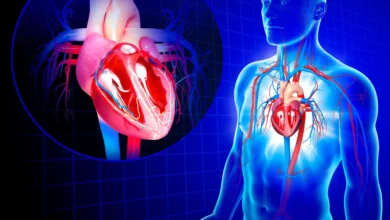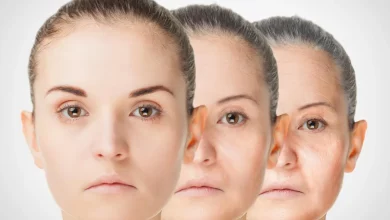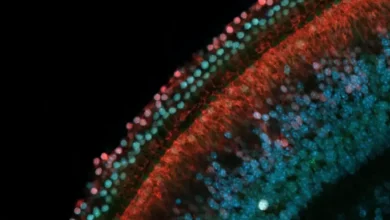
Heat has been used for healing long before saunas were invented. The ancient Greeks and Romans built public baths over hot springs and on manmade fire furnaces. In East Asian history, stones were heated by fire and placed on the body to deliver the healing powers of heat.
Today, scientists understand the mechanism behind the therapeutic benefits of heat immersion. When the body is exposed to temperatures of 102.2 degrees Fahrenheit and above, heat shock proteins are released.
What are Heat Shock Proteins?
Heat shock proteins are a type of stress protein — molecules that regulate the body in response to external stressors like extreme temperatures. As soon as your body is exposed to heat, the production of these proteins skyrockets. The way weightlifting stresses your muscles and requires them to rebuild stronger, heat shock proteins strengthen cells and make them more resilient to stress. They play a role in maintaining homeostasis for the immune system, nervous system, and more.
Here are the benefits heat shock proteins provide:
1. Better Brain Health
Heat exposure has been linked with enhanced mitochondrial function in cells. Mitochondria are responsible for generating energy in almost all cells, including brain and nerve cells. Research on mice with Alzheimer’s disease found that heat exposure reduced neurodegeneration by reversing mitochondria dysfunction. In a study involving over 2,000 healthy middle-aged adults, sauna therapy at least twice a week was shown to reduce the risk of dementia and Alzheimer’s disease.[1]
2. Helps Your Heart
Researchers believe heat therapy also improves brain health in older adults and people with heart disease by improving the flow of blood to the brain. In patients with peripheral arterial disease, regular heat therapy lowered blood pressure in just 12 weeks.[1]
In a study on obese women, 30 hot tub sessions over the course of nine weeks lowered cardiovascular risk factors. While hot water immersion didn’t cause weight loss, it did improve heart health in statistically significant ways by lowering blood pressure and cholesterol, as well as by improving artery dilation.[2]
3. Speedier Muscle Recovery from Workouts
Heat shock proteins are activated not just by heat exposure but also by exercise. When you boost the flow of heat shock proteins with a heating pad or a sauna after your workout, you can reap even more benefits. Heat shock proteins stimulate the production of new proteins required to build new muscle tissue after exercise and ensure these proteins fold in the correct shape. They also help direct glucose and amino acids to the sites of muscle damage to promote speedier recovery.[3]
By boosting blood flow, heat exposure can speed up the movement of lactic acid build-up away from muscle tissues, reducing post-workout soreness.
4. Immune Support
Your immune system is continually reacting to your environment, detecting and neutralizing foreign invaders in order to keep vital organs in homeostasis. White blood cells are responsible for analyzing threats and producing the antibodies that destroy them. Heat shock proteins boost white blood cell production, leading to an increase in T cells, dendritic cells, and microphages.[4] The result is bolstered immune function, which could potentially reduce the frequency and severity of viral infections like common colds.
Heat Therapy Methods to Activate Hot Shock Proteins
Exposure to temperatures of 102.2 degrees F and above activates the release of hot shock proteins. Exercise also activates them without the need to add heat. Here are the best ways to benefit from heat shock therapy:
1. Exercise
Exercise causes an influx of heat shock proteins throughout the body, including in the brain.[1] Aerobic exercises like running, cycling, and swimming particularly spur the production of heat shock protein, even if you don’t feel particularly hot while exercising.
2. Hot baths and saunas
Saunas, hot tubs, and hot baths are great ways to expose your body to heat and benefit from heat shock proteins. It’s safe to immerse yourself in high temperatures every day. However, you should limit your sessions to 20 minutes. Be sure to replenish yourself with fluids when sitting in a sauna or immersing in hot water.
3. Heating pads
You may be wondering if using an electric heating pad gives you the same benefit as hot water immersion or sauna therapy. According to research, heat applied to localized areas does prompt the flow of heat shock proteins in those areas.[5] As a result, applying a heating pad to a sore muscle or aching joint can support its healing.
Activating Hot Shock Proteins for Healing and Health
Far from being a new trend, heat therapy is an age-old practice people have done for thousands of years. Thanks to saunas and electric heating pads, you don’t have to rely on hot springs or volcanic caves to reap the benefits of hot shock proteins. When activated by a rise in temperature, these proteins will support your immune system, have an anti-aging effect on the brain, and speed muscle recovery from exercise.
References:
- “Heat therapy: possible benefits for cognitive function and the aging brain” by Alex T. Von Schulze, Fengyan Deng, Jill K. Morris and Paige C. Geiger, 11 December 2020, Journal of Applied Physiology.
DOI: 10.1152/japplphysiol.00168.2020 - “Heat therapy reduces sympathetic activity and improves cardiovascular risk profile in women who are obese with polycystic ovary syndrome” by Brett R. Ely, Michael A. Francisco, John R. Halliwill, Samantha D. Bryan, Lindan N. Comrada, Emily A. Larson, Vienna E. Brunt and Christopher T. Minson, 23 October 2019, American Journal of Physiology-Regulatory, Integrative and Comparative Physiology.
DOI: 10.1152/ajpregu.00078.2019 - “Local Heat Therapy to Accelerate Recovery After Exercise-Induced Muscle Damage” by Kyoungrae Kim, Jacob C. Monroe, Timothy P. Gavin and Bruno T. Roseguini, October 2020, Exercise and Sport Sciences Reviews.
DOI: 10.1249/JES.0000000000000230 - “Heat shock proteins induce T cell regulation of chronic inflammation” by F Hauet‐Broere, L Wieten, T Guichelaar, S Berlo, R van der Zee and W Van Eden, 12 October 2006, .
DOI: 10.1136/ard.2006.058495 - “Targeted heat activation of HSP promoters in the skin of mammalian animals and humans” by Richard Voellmy, Olivier Zürcher, Manon Zürcher, Pierre A. de Viragh, Alexis K. Hall and Stephen M. Roberts, 7 February 2018, Cell Stress and Chaperones.
DOI: 10.1007/s12192-018-0875-4
This article is not intended to provide medical advice. It is for informational purposes only and should not be relied upon as a substitute for professional medical advice, diagnosis, or treatment. If you have any concerns or questions about your health, please consult with a qualified healthcare provider. The information provided in this article is not intended to diagnose, treat, cure, or prevent any disease.





